Discover the highlights of the Kedarnath Trek, a powerful blend of spirituality and adventure in the Himalayas.
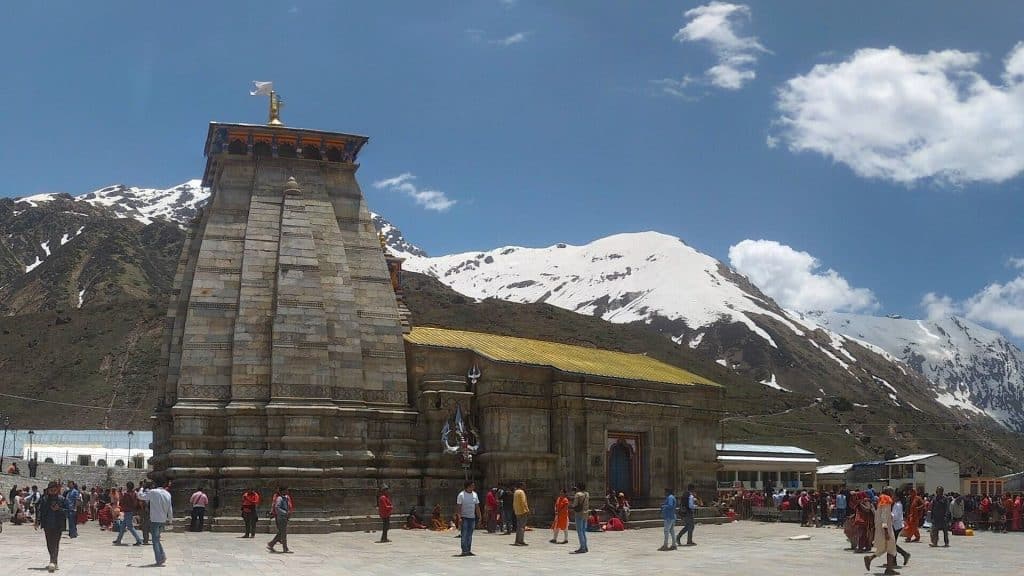
Kedarnath is one of India’s most revered temple destinations in the majestic Garhwal Himalayas. Situated at an altitude of 3,580 meters, this sacred town is built around the famous Kedarnath Temple, near the Chorabari Glacier, which is the source of the Mandakini River.
Dedicated to Lord Shiva, the ancient Kedarnath Temple boasts exquisite architecture, made of large, evenly shaped grey stone slabs. Inside, a unique conical rock formation is worshipped as Lord Shiva in his “Sadashiva” form. This temple is not only a significant part of the Char Dham pilgrimage circuit but also one of the 12 Jyotirlingas of Lord Shiva in India. The backdrop of the temple features the impressive Kedarnath Peak, Kedar Dome, and other towering Himalayan peaks.
Historically known as “Kedar Khand,” the region is legendary. According to the epic Mahabharata, the Pandavas, after their victory over the Kauravas, sought Lord Shiva’s blessings for redemption from their guilt.
The elusive Lord Shiva took refuge in Kedarnath in the form of a bull, diving into the ground and leaving his hump on the surface, which is worshipped at Kedarnath today. Other parts of Shiva appeared at four different locations, forming the revered Panch Kedar pilgrimage circuit: Tungnath (arms), Rudranath (face), Madmaheshwar (belly), and Kalpeshwar (locks of hair).
Reaching the Kedarnath Temple requires an inspiring 16-kilometer trek starting from Sonprayag. Join us on this beautiful journey filled with spiritual significance.
Historical Significance
Kedarnath is a revered pilgrimage site dedicated to the Hindu deity Shiva. It is one of the four sacred destinations that form part of the Uttarakhand Char Dham Yatra, also known as the Chota Char Dham Yatra. The temple’s construction is attributed to the Pandava brothers from the Mahabharata.
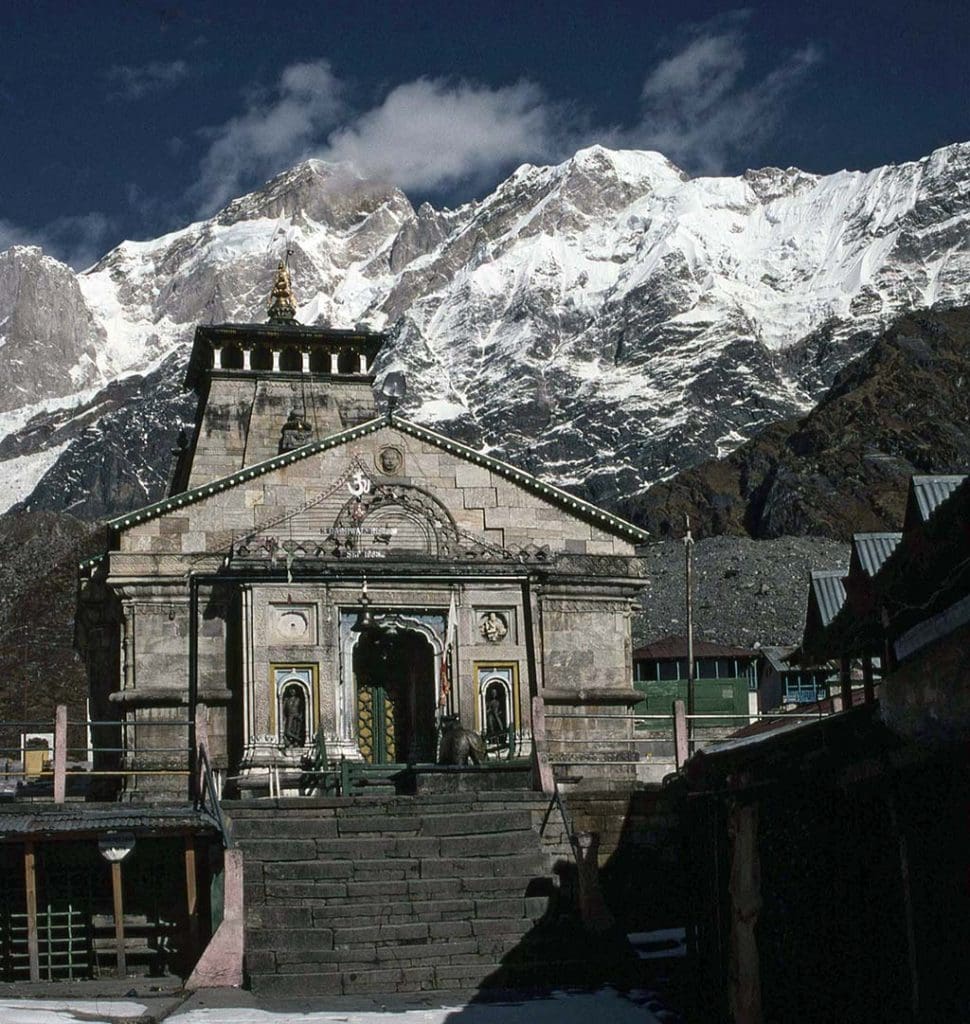
However, the Mahabharata does not specifically mention a place called Kedarnath. One of the earliest references to Kedarnath appears in the Skanda Purana (circa 7th-8th century), which identifies Kedara (Kedarnath) as the location where Shiva released the holy waters of the Ganga from his matted hair, leading to the formation of the Ganges River.
According to hagiographies based on Madhava’s Sankshepa-Shankara-Vijaya, the 8th-century philosopher Adi Shankaracharya died near the Kedarnath mountains. However, other hagiographies, based on Anandagiri’s Prachina-Shankara-Vijaya, claim he died at Kanchipuram. The ruins of a monument purported to mark the resting place of Adi Shankaracharya are located at Kedarnath.
The Kedarnath Trek: Gaurikund to Kedarnath
Gaurikund stands as the final accessible point by any means of transport, making the distance of 16 kilometres to Kedarnath crucial for all pilgrims. Situated at 6,502 feet above sea level, Gaurikund serves as the starting point for those journeying to the Kedarnath shrine. Understanding the straightforward Gaurikund to Kedarnath distance and duration is essential.
Initially a 14-kilometer journey, the Kedarnath Trek route was extended to 16 kilometres after the 2013 floods necessitated a new trek route to Kedarnath.
From here, the Kedarnath Trek unfolds with the following steps:
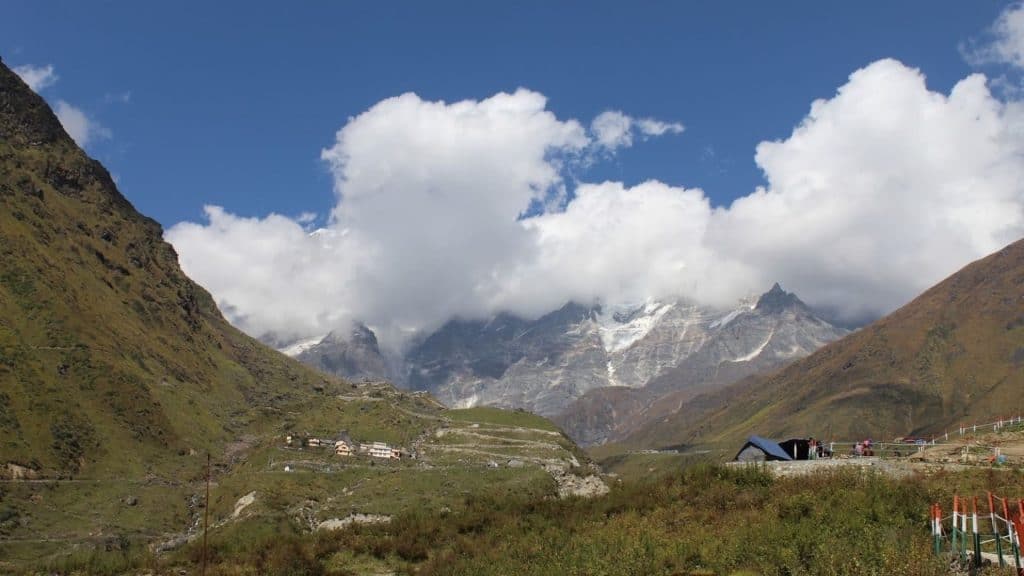
Jungle Chatti
Located near the Rambara bridge, Jungle Chatti is approximately 4 kilometres from Gaurikund. This stretch can be covered by walking or utilizing Pony and Palki services for a comfortable journey.
Bheembali
Next, a 3-kilometre trek from Jungle Chatti leads to BheemBali, where you’ll find abundant facilities such as GMVN tents, complimentary drinking water, restrooms, and WiFi services.
Linchauli
Following that, a 4-mile hike from Bheembali takes you to Linchauli, offering a breathtaking view of the highlands where the Mandakini River begins. Medical facilities, as well as private and GMVN tents, are available here.
Kedarnath Base Camp
Subsequently, it’s approximately 4 kilometres from Linchauli to the Kedarnath base camp, passing by numerous glaciers and scenic panoramas along the way.
Kedarnath Temple
It’s just a 1-kilometer distance from Kedarnath Base Camp to Kedarnath Temple. At the Base Camp, you’ll find the GMVN camp, where reservations can be made through their official website.
Things to do in Kedarnath
Explore Vasuki Tal
An expansive lake situated 8 km into the Himalayas near Kedarnath, offers a captivating experience for hikers willing to tackle its steep slopes. The panoramic vistas of the Himalayan mountain ranges, tranquil blue waters, and lush forest surroundings make it an exhilarating adventure. This popular spot attracts both pilgrims and tourists and is accessible round the clock.
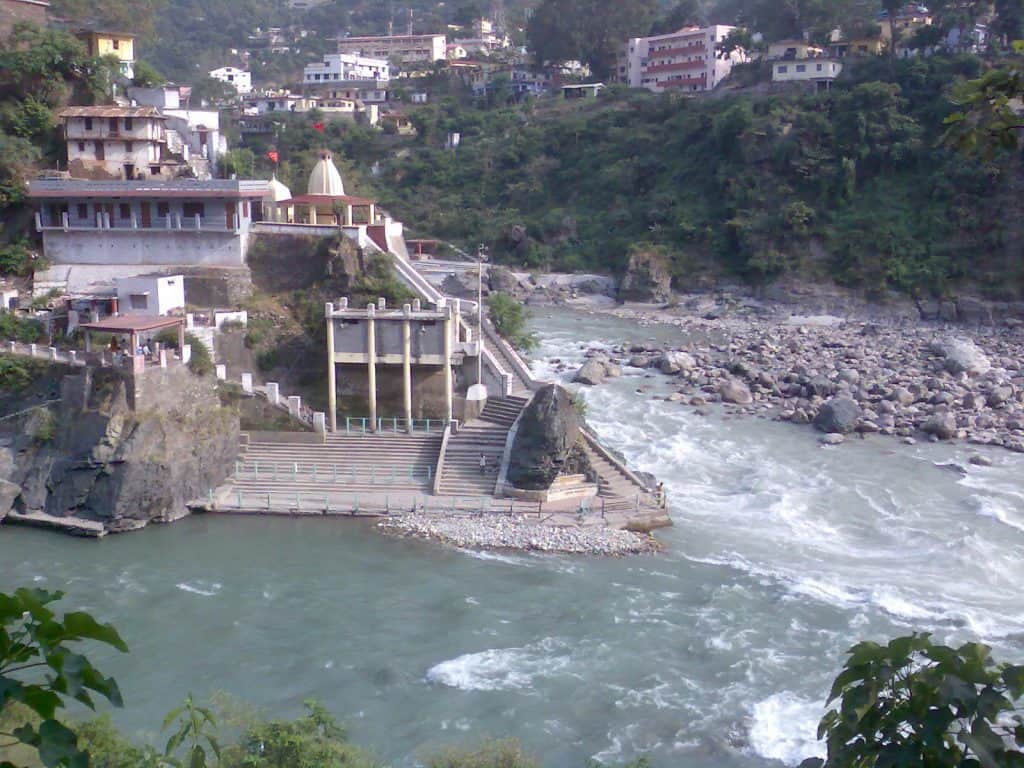
Visit Sonprayag
Another place of religious significance on your way to the Kedarnath Temple is Sonprayag. Perched at an altitude of 1829 meters above sea level, this location is believed to be the site of the marriage of Lord Shiva and Goddess Parvati. The term “Prayag” means “convergence,” and Sonprayag is where the Basuki and Mandakini rivers meet. Situated between Rudraprayag and Gaurikund, it can be reached by taking a cab or taxi from Rudraprayag.
Visit Sunset Point
For unparalleled views of the Chopta Valley, this is the perfect destination. Ideal for overnight camping, it also serves as the base for treks to Tungnath and Chandrashila. Visitors can capture stunning footage of the expansive Valley as a backdrop, making for a truly unique outdoor experience.
Enjoy Bird Watching
Chopta, located in the Kedarnath Wildlife Sanctuary of the Garhwal Himalayas, is rapidly becoming a premier birdwatching destination in India. With its breathtaking landscapes, a mix of pine and deodar forests, rhododendrons, and lush grassy meadows known as ‘bugyals,’ it is one of the most accessible places in India to spot the stunning ‘nine-coloured’ state bird of Uttarakhand, the Himalayan Monal.
Bird enthusiasts can also find Kalij and Koklass Pheasants, the delightful Brown Dipper, nuthatches, and laughingthrushes. Chopta is a paradise for wildlife lovers, birdwatchers, and photographers alike.
In essence, the Kedarnath Trek is a transformative pilgrimage that blends the beauty of the Himalayas with profound spiritual insights, making it a journey that touches the heart and soul of every pilgrim.
Importance of the Kedarnath Trek in Hindu pilgrimage
The journey to Kedarnath is often seen as a sacred and transformative experience, where devotees make remarkable spiritual progress. For many, the trek to Kedarnath is one of the most significant parts of the Chardham Yatra. This pilgrimage can have a profound spiritual impact on a person. Here are a few of these impacts:
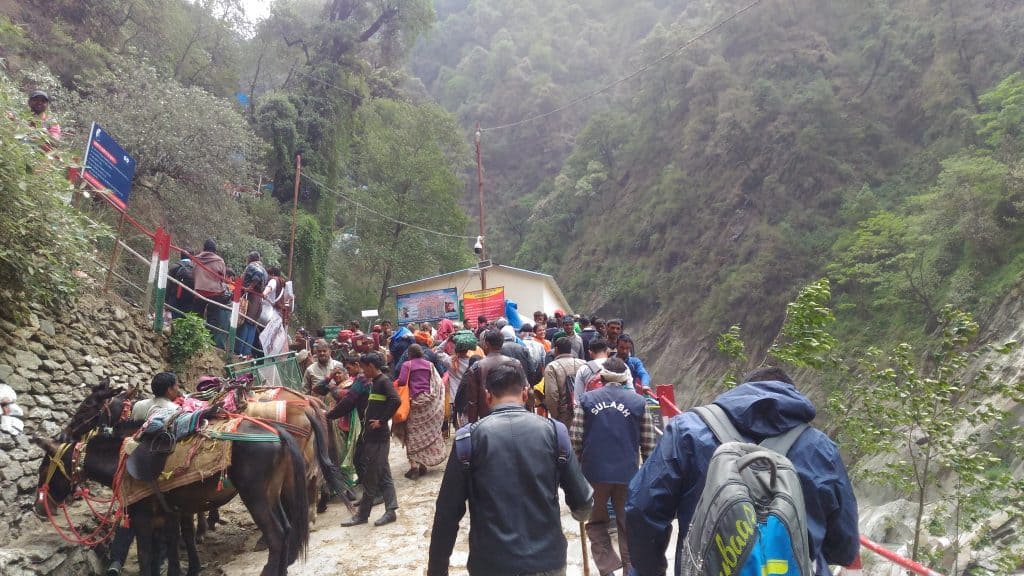
Purification and Cleaning of the Sins
Many view the Yatra to Kedarnath, the highest of the Chardham sites, as a journey of soul purification. According to tradition, the Pandavas reached Kedarnath to cleanse themselves of their sins after the Mahabharata. Believers hold that the Kedarnath Trek or Yatra helps in their spiritual purification by freeing them from sins and impurities.
Test of Devotion
A person’s dedication and devotion to Lord Shiva are often measured by their achievements on the Kedarnath pilgrimage. The physical challenges, treacherous terrain, and unpredictable weather along the route symbolize life’s ups and downs. Overcoming these obstacles is seen as a sign of unwavering faith.
Completion of Religious Vows
Many devotees travel to Kedarnath to fulfil their religious vows. It is believed that doing so brings fulfilment and divine blessings. Some pilgrims undertake the Kedarnath Yatra to fulfil specific requests they have made, performing the journey as a sign of respect and devotion to Lord Shiva.
The Kedarnath Trek is much more than a journey through the scenic Garhwal Himalayas; it is a profound spiritual and adventurous experience. As part of the Char Dham pilgrimage and one of the 12 Jyotirlingas, the Kedarnath Temple attracts countless devotees seeking redemption, purification, and divine blessings.
Some Interesting Facts About Kedarnath Temple
Winter Worship Transition: When the Kedarnath Temple closes for six months during winter, the deity’s idol is moved to the Omkareshwar Temple in Ukhimath, where it continues to be worshipped until Kedarnath reopens.
Management: The Kedarnath Temple is managed by the Kedarnath Temple Commission under the Shri Kedarnath Mandir Act, enacted by the Uttar Pradesh Government.
Unique Shiva Lingam: The Shiva Lingam in Kedarnath Temple is uniquely triangular, setting it apart from other Shiva temples. Inside the sanctum (Garbha Griha), there are also idols of Parvati, Lord Krishna, the five Pandavas, their wife Draupadi, Nandi, and Veerabhadra.
Ritual Language: Mantras in the Kedarnath Temple are chanted in Kannada.
Challenging Weather: Kedarnath’s unpredictable weather conditions make access challenging. In 2013, the temple faced severe flooding, resulting in massive destruction.
Impressive Dimensions: The temple stands 85 feet high, measures 187 feet in length, and 80 feet in width. The walls are 12 feet thick and made from extremely durable stones.
Architectural Feat: Positioned on a 6-foot-high platform, the temple was carved from large stones. Experts believe that interlocking technology was used to connect the stones, allowing the temple to withstand the surrounding river forces.
Sacred Jyotirlinga: Kedarnath Temple is one of the twelve holy Jyotirlingas dedicated to Lord Shiva. It is believed that Lord Shiva blessed the Himalayas at this temple, endowing it with spiritual significance for his devotees.
Read more: Latest



